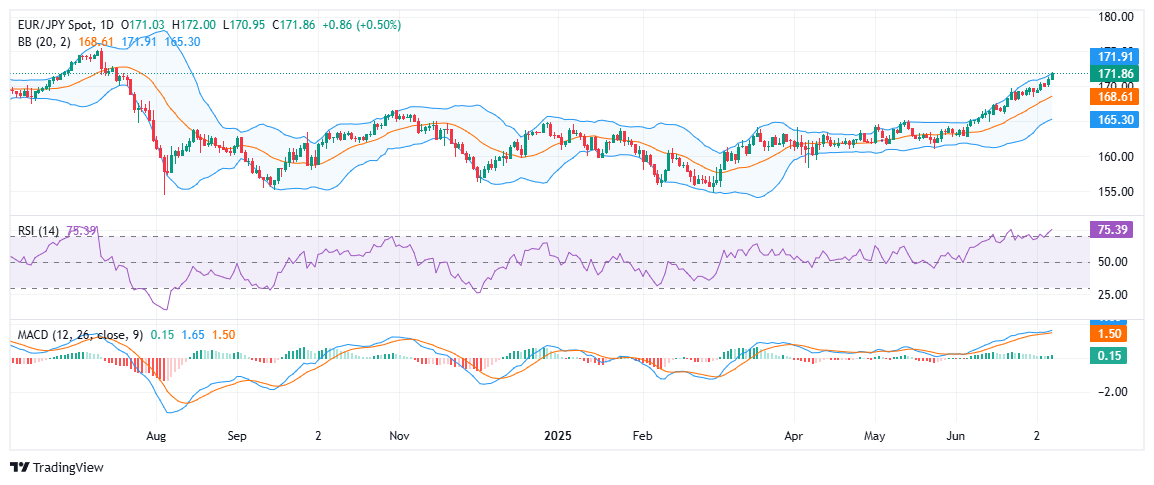- The euro wins for the second day in front of the Japanese Yen while the Yen weakens in general.
- Trump publishes letters in Truth social threatening tariffs of 25% to all Japanese imports from August 1.
- The crossing quotes about 171.80, last seen in July 2024, rising 0.56% in the day.
The euro (EUR) extends its progress against the Japanese Yen (JPY) for the second consecutive session on Tuesday, since the Yen weakens widely against the main currencies. The last sales pressure wave over Yen occurs after US President Donald Trump published a series of letters on his social networks on Monday, warning about high reciprocal tariffs aimed at several countries, including Japan.
US President Trump threatened to impose a 25% tariff on all Japanese imports from August 1, citing unfair commercial practices. The renewed tariff threats have revived commercial tensions, affecting the demand of Yen as a safe refuge and raising EUR/JPY in the middle of a general feeling of risk aversion.
The EUR/JPY crossing has been operating in the front since the beginning of June, maintaining a constant ascending trajectory. At the time of writing, the torque is about 171.80 during the American session, a level seen for the last time on July 17, 2024. The crossing has risen 0.56% in the day, supported by the persistent strength of the euro and the generalized weakness of the YEN.
Meanwhile, the European Union (EU) was not included in the last US tariff threat while countries like Japan and South Korea received formal letters warning about 25% tariffs on imports, the EU was not among them. Commercial conversations between the US and the EU are gaining impulse before the expanded deadline for tariffs. Reports suggest that Washington is proposing a restart of existing tariffs, with the aim of reducing the majority of EU import tariffs to a base of 10%, maintaining high rates in sensitive sectors, such as cars, steel and aluminum. Brussels is working on a draft of Framework to avoid a broader escalation, although internal disagreements within the EU, particularly between Germany and France, are complicating consensus. The lack of timely agreement could trigger high punitive tariffs, adding to a fragile market feeling.

Technically, the EUR/JPY maintains its upward trajectory, quoting about 171.80 during the American session on Tuesday. The crossing remains well supported above the simple mobile average (SMA) of 20 days, currently in 168.61, which also serves as the midline of the Bollinger bands and continues to press against the upper limit of the Bollinger bands, reflecting a sustained bullish impulse. The recent rupture above the psychological level of 170.00 has further reinforced the upward structure, without immediate exhaustion signs.
Impulse indicators are still firmly in favor of the bulls. The Relative Force Index (RSI) is high in 75, oscillating in overcompra territory but consisting of strong trend conditions. Meanwhile, the histogram of the convergence/divergence indicator of mobile socks (MACD) is expanding positively, and the MACD line is maintained above the signal line, confirming the bullish impulse.
At the bottom, the initial support is observed in the 20 -day SMA, in the Bollinger Media band about 168.60. A deeper setback could expose Bollinger’s lower band around 165.00, a level that previously acted as resistance and can now serve as a key support. In the upper part, the following objective could be the maximum of July 17, 2024, in 172.83
Source: Fx Street
I am Joshua Winder, a senior-level journalist and editor at World Stock Market. I specialize in covering news related to the stock market and economic trends. With more than 8 years of experience in this field, I have become an expert in financial reporting.







